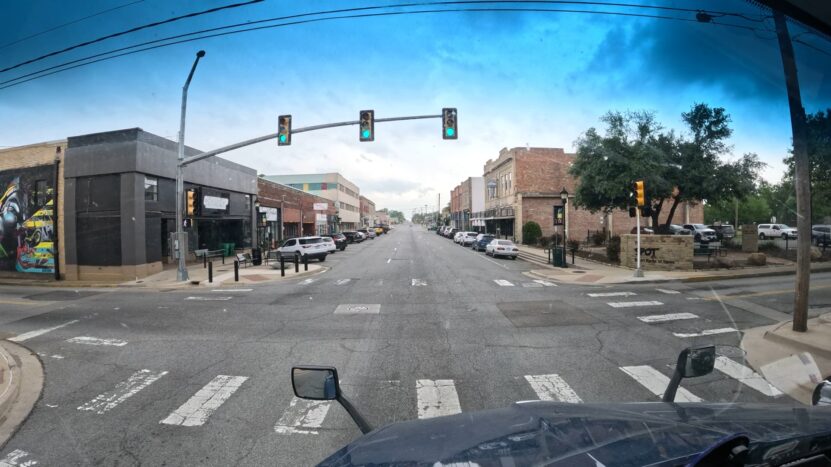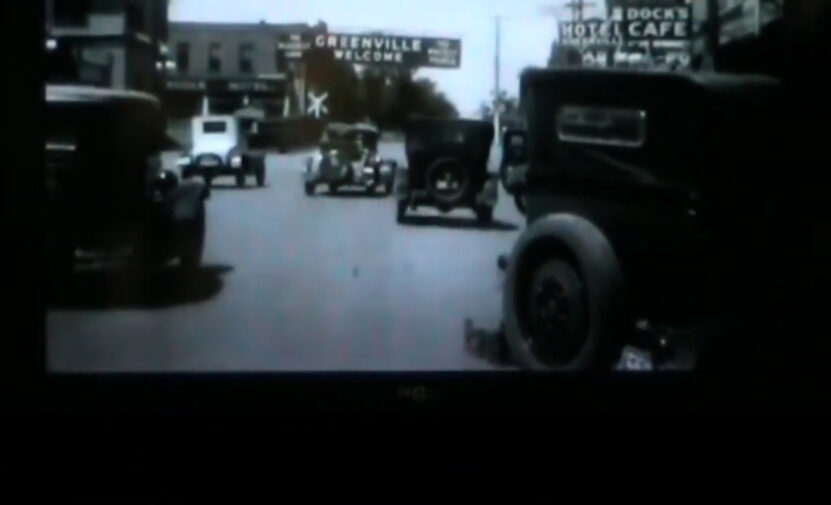Greenville, Texas, a city steeped in history and controversy, is often remembered for its notorious “Welcome Sign” that once hung in its downtown area. This sign, which read “Greenville Welcome, The Blackest Land, The Whitest People,” represented a juxtaposition of agricultural pride and racial connotations that have sparked debate and reflection over the years.
Origin and Message
The origin of the Greenville sign dates back to the early 20th century, a period of significant growth and development in the city. Greenville, known as the county seat of Hunt County, was established in 1846 and named in honor of General Thomas J. Green.
The city’s early history was marked by rapid expansion and the establishment of key institutions like a post office, a Masonic lodge, and various commercial enterprises. The sign’s message, “The Blackest Land, The Whitest People,” had a dual meaning.
On one hand, “The Blackest Land” referred to the rich, fertile soil of the region, ideal for agriculture and particularly cotton cultivation, which became a major industry in the late 19th century. On the other hand, the “The Whitest People” phrase, while ostensibly referring to the moral character or integrity of its citizens, was also interpreted as a reflection of the racial attitudes prevalent at the time.
Impact and Removal

This sign, hanging over a street bustling with businesses such as grocery stores and auto loan shops, became an iconic yet divisive symbol of Greenville. Its presence sparked a range of reactions, from local pride in the agricultural prowess of the area to discomfort and outrage over the racial implications of its wording.
The controversy reached its peak in the 1960s, leading to the sign’s removal at the request of Texas Governor John Connally. The removal marked an effort to distance the city from the racial undertones of the past and move towards a more inclusive future.
However, the sign’s legacy continued to linger, serving as a reminder of the complex and often troubled history of race relations in the United States.
Greenville’s Evolution Post-Sign
Following the removal of the sign, Greenville embarked on a journey of transformation and growth. The city continued to develop its economic base, moving beyond its agricultural roots to embrace diverse industries.
This period also saw efforts to foster a more inclusive community, addressing the challenges of the past while looking forward to a more united future. The story of the Greenville sign is more than just a tale of a controversial landmark; it’s a reflection of evolving societal values and the ongoing journey toward understanding and reconciliation.
The sign, now a part of local history, catalyzes discussions about race, history, and the power of symbols in shaping our understanding of the past.
Foundation and Growth

Greenville’s story begins in 1846, established as the county seat of Hunt County and named after General Thomas J. Green. This period was crucial in laying the foundations of a town that would later become a significant hub in Texas.
The first courthouse, a log structure raised in 1847, symbolized the embryonic stages of civic development. The town was strategically positioned on a vast prairie, distinguished by its tall grass and fertile soil, which would later contribute to its agricultural success.
By 1852, Greenville was officially incorporated, with a post office already functioning since 1847. The town’s growth was rapid and robust.
The 1850s witnessed a flurry of activity with the establishment of various businesses, hotels, and drug stores, all clustered around the courthouse square. This era set the stage for Greenville’s evolution from a modest prairie town to a bustling center of commerce and community life.
The Civil War and Post-War Era
The Civil War era and its aftermath were pivotal in shaping Greenville’s trajectory. Hunt County was not a major producer of traditional southern crops like cotton until after 1880, reflecting a diverse economic base.
The county’s stance during the Civil War was ambivalent, with a slight majority supporting the Confederacy. This period was marked by internal conflict, necessitating the stationing of federal troops in Greenville to maintain peace.
The post-Civil War era brought further changes. Greenville witnessed the arrival of the Missouri, Kansas, and Texas Railway in 1880, a development that significantly boosted the local economy and led to the emergence of cotton as a key crop.
The town’s population swelled to 12,000 by 1925, reflecting its growing importance in the region.
The Sign’s Role in Greenville’s Identity

The controversial sign, installed in the early 20th century, was as much a product of its time as it was a statement of the town’s agricultural pride. “The Blackest Land” celebrated Greenville’s fertile soil, ideal for cotton cultivation, which had become a cornerstone of the local economy.
This phrase was a badge of honor, symbolizing the hard work and dedication of the farming community. However, “The Whitest People” was a phrase mired in the racial attitudes of the era.
In the context of early 20th-century America, this phrase was seen by many as a marker of racial exclusivity, a sentiment that was increasingly at odds with the evolving views on race and equality. The sign, therefore, became a source of contention, reflecting the broader societal tensions of the time.
The Sign’s Removal and Aftermath
The decision to remove the sign in the 1960s was a watershed moment for Greenville. It represented an acknowledgment of the need for change and an aspiration towards a more inclusive and respectful community.
The removal was a significant step in redefining Greenville’s identity, one that aimed to distance the town from its racially charged past. The sign’s removal did not erase its history, but it opened up avenues for dialogue and reflection.
It became a part of Greenville’s collective memory, a reminder of a past that needed to be confronted and understood. The story of the sign is a testament to the town’s journey through complex social and racial landscapes, shaping its identity in the process.
FAQ
What industries emerged in the town after the sign’s removal?
After the removal of the sign, Greenville, Texas, diversified its economy beyond its agricultural roots. The city embraced a variety of industries, including manufacturing, retail, and service sectors, contributing to its economic growth and community development.
How has the town addressed its racial history since the removal of the sign?
Following the removal of the sign, Greenville has made efforts to foster a more inclusive community. This includes engaging in open dialogues about its racial history, supporting diversity initiatives, and working towards building a community that respects and celebrates its diverse population.
Are there memorials or educational programs in the town that reflect on its controversial past?
Greenville has incorporated its history, including the controversy surrounding the sign, into local educational programs and historical discussions. While specific memorials may not be dedicated solely to this aspect of its past, the city’s history is acknowledged and taught as a part of its commitment to understanding and reconciliation.
How did the railroad’s arrival in 1880 impact Greenville’s development?
The arrival of the Missouri, Kansas, and Texas Railway in 1880 was a major catalyst for Greenville’s development. It significantly boosted the local economy, particularly by facilitating the growth of the cotton industry, and contributed to a population increase, transforming Greenville into a regional hub of commerce and trade.
How did Greenville’s residents react to the sign’s removal in the 1960s?
The reaction among Greenville’s residents to the removal of the sign was mixed. While some viewed it as a necessary step towards progress and inclusivity, others felt it was a loss of a part of the city’s identity and history, reflecting the varied perspectives on race and heritage at the time.
Has Greenville hosted events related to its historical signs and racial history?
Greenville has hosted various events and discussions that delve into its historical signs and racial history. These include community forums, historical exhibitions, and educational programs in schools and local institutions, aiming to promote understanding and dialogue about its complex past.
Final Words
Greenville, Texas, is a city with a rich and complex history, marked by both its agricultural success and its challenging racial past. The infamous “Welcome Sign” of the early 20th century, reading “Greenville Welcome, The Blackest Land, The Whitest People,” encapsulated this duality, symbolizing both the city’s agricultural pride and the racial attitudes of the era.
Its removal in the 1960s was a pivotal moment, reflecting a broader societal shift towards inclusivity and understanding. Since then, Greenville has undergone significant transformation.
The story of Greenville and its sign is a microcosm of the larger narrative of American history, where progress is often accompanied by reflection and change. It serves as a reminder of the power of symbols in our society and the importance of confronting and understanding our history to build a more inclusive and united future.
For a story about another sign in the region check here.

